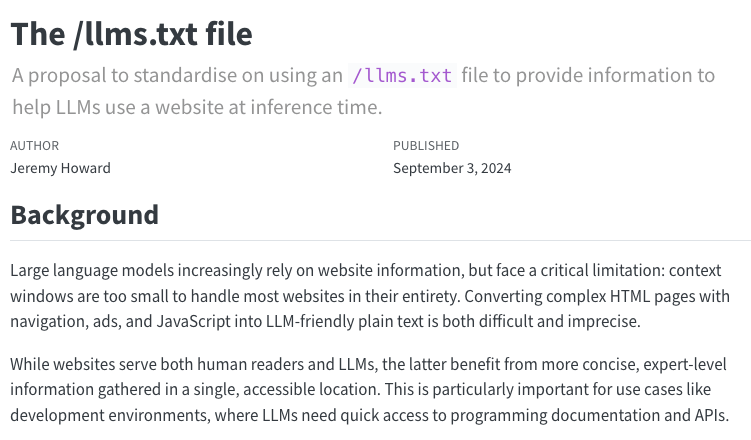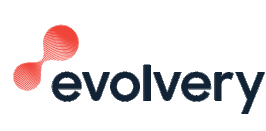If you’ve been keeping tabs on the AI landscape lately, you’ve probably heard whispers about something called “llms.txt.” It’s the latest proposed standard for how websites can communicate with AI systems, and it’s generating both excitement and skepticism in equal measure.

Here’s what’s happening: as AI-powered search increasingly becomes how people find information online, businesses face a new challenge – making sure their content remains visible and accurately represented when users ask questions through ChatGPT, Claude, or Gemini rather than traditional search engines.
You might be wondering if this is just another tech fad or something your organization needs to take seriously. The truth? The jury’s still out. While some tech companies are rushing to implement llms.txt, major AI providers haven’t officially adopted it yet. Still, understanding this emerging protocol could give you a strategic edge as AI continues reshaping how people discover information online.
In this guide, we’ll walk through what llms.txt actually is, when it makes sense to implement it (and when it doesn’t), practical implementation tips, and how to measure its impact. By the end, you’ll have a clear framework for deciding whether this belongs in your digital strategy.
What is llms.txt?
At its core, llms.txt is a simple Markdown file that sits at the root of your website (like example.com/llms.txt) and acts as a curated guide to your most important content. Think of it as creating a VIP tour for AI systems visiting your site – you’re essentially saying “ignore all the fluff and focus on these key pages.”
The file follows a straightforward structure:
- A top-level heading with your site or company name
- A brief summary of what you do
- Second-level headings that organize content into logical categories
- Concise descriptions of your most valuable resources with links
Here’s what a basic llms.txt file might look like:
# Acme Corporation
> We provide cloud-based project management software for enterprise teams.
## Products
- [Project Hub](/products/project-hub): Our flagship project management platform with real-time collaboration features.
- [TimeTracker](/products/timetracker): Automated time tracking with integration into billing systems.
## Documentation
- [API Reference](/developers/api): Complete documentation for our REST API.
- [Getting Started](/docs/quickstart): Step-by-step guide for new users.
## Policies
- [Privacy Policy](/legal/privacy): How we collect and use customer data.
- [Terms of Service](/legal/terms): Legal terms governing use of our services.
Unlike robots.txt, which tells search crawlers what NOT to access, llms.txt is all about inclusion – pointing AI directly to your most valuable content. And while sitemap.xml provides a comprehensive inventory of all your pages, llms.txt offers a carefully curated selection with context that helps AI understand what matters most.
When to Implement llms.txt
For Technology and Developer-Focused Companies
If you’re running a tech company, especially one with developer-focused products, implementing llms.txt might be worth prioritizing. Why? Your target audience is likely already using AI coding assistants and research tools as part of their daily workflow.
You should consider implementing if:
- Your customers regularly use tools like GitHub Copilot, ChatGPT, or other AI assistants for research
- Being seen as forward-thinking and “AI-native” aligns with your brand positioning
- You have well-structured technical documentation that’s easily adaptable to this format
Companies like Vercel, Mintlify, and Anthropic were early adopters precisely because the protocol aligned naturally with their audience and brand identity.
For Large Enterprises with Significant Digital Presence
If you’re at the helm of a larger organization, llms.txt presents an interesting low-risk bet on the future. The implementation cost is relatively minimal compared to your overall digital budget, and it could provide a competitive edge down the road.
Consider implementation if:
- Your brand is frequently mentioned or discussed online, making accuracy in AI responses important
- You have the technical resources to implement and maintain the file without significant strain
- You’re already investing in other forms of AI readiness across your digital properties
From a risk management perspective, implementing llms.txt is like buying an inexpensive insurance policy against potential future changes in how AI systems discover and represent your content.
When Not to Implement
Let’s be honest – llms.txt isn’t for everyone, and there’s no shame in sitting this one out. You probably should skip implementation if:
- You’re a small business with limited technical resources and other clear priorities
- Your website lacks the technical infrastructure or personnel to maintain additional files
- Your target audience isn’t likely to use AI-powered search in the near term
As John Mueller from Google noted, “No AI system currently uses llms.txt” – making this a speculative investment rather than an immediate necessity. If your resources are constrained, focus on fundamentals like quality content and standard SEO practices first.
Tips for Implementing llms.txt
Conduct a Strategic Content Audit
Before writing a single line of Markdown, take time to identify what truly deserves a spot in your llms.txt file:
- Focus on your 5-10 most authoritative pages that represent your core offerings
- Prioritize high-value resources like API documentation, product information, and official policies
- Include content that directly answers the questions your customers most frequently ask
Remember, this isn’t about volume but value. Each link should earn its place by being genuinely useful to someone seeking information about your company. Ask yourself: “If someone only had 5 minutes to understand our business, which pages we’d show them?”.
Follow the Technical Specification
Getting the technical details right ensures your file will be ready if and when major AI systems start consuming it:
- Place the file in your website’s root directory (e.g., example.com/llms.txt)
- Use proper Markdown formatting with an H1 title for your company/site name and H2 sections for categories
- Keep descriptions concise but informative – aim for clarity over marketing language
Consider the Full Ecosystem
While the basic llms.txt file is a good starting point, consider implementing these companion approaches:
- Create an llms-full.txt file that contains complete documentation for bulk ingestion
- Provide clean .md versions of your key pages (e.g., example.com/about.md)
- Align your llms.txt content with your existing structured data (Schema.org markup)
This layered approach gives AI systems multiple ways to access your content based on their specific needs.
Establish Maintenance Protocols
The worst thing you can do is create an llms.txt file and then forget about it. Instead:
- Integrate updates into your existing content workflow so the file stays current
- Assign clear ownership to someone who understands both the technical requirements and your content strategy
- Review and refresh the file whenever you make significant changes to your key pages or offerings
What to Do After Implementing llms.txt
Monitor Server Logs
Once your file is live, keep an eye on how it’s being used:
- Check server logs for requests to your llms.txt file to see if and when AI crawlers access it
- Look for patterns in crawler behavior that might indicate which systems are using the file
- Establish baseline metrics so you can track changes over time
This monitoring will help you determine whether your investment is paying off.
Test AI Responses
The real measure of success is whether AI systems represent your brand more accurately:
- Regularly prompt major LLMs with questions about your products, services, or company
- Compare the responses to your actual content to check for accuracy
- Document any improvements or changes in how your brand is represented
Conclusion: A Strategic Bet on the Future of AI-Web Interaction
Implementing llms.txt today is essentially placing a small, calculated bet on the future direction of AI-web interaction. While no major AI providers officially support the standard yet, the relatively low cost of implementation makes it a reasonable investment for many organizations – especially those in the tech sector or with significant digital presence.
The decision ultimately comes down to your organization’s risk tolerance, resource availability, and strategic priorities. By understanding both the potential benefits and the current limitations, you can make an informed choice about whether llms.txt deserves a place in your digital strategy.
The future of search is being reshaped by AI, and forward-thinking executives are already positioning their organizations to thrive in this new landscape. Whether llms.txt becomes the standard or simply a stepping stone to something else, the underlying principle remains valid: helping AI systems better understand your content is likely to be increasingly important in the years ahead.
